Mrs Gilbey, the landlady of the White Swan pub for 30 years, and her son. ©Mill Road History Society
Gabrielle Watts finds out more about the group on a mission to tell the fascinating stories behind one of Cambridge’s most lively neighbourhoods
In October 2013, at the site of the road’s oldest surviving building, the Mill Road History Project was officially launched. That building, now Ditchburn Place, was once the maternity hospital: a fitting location for the birth of what has been an ambitious, intricately detailed survey of Mill Road. From the people to the buildings, the project and its website, Capturing Cambridge, have captured the essence of what has made Mill Road the kaleidoscopic hub of local culture that it is today. Through this history they’ve sought to take a snap shot of the social history of Cambridge itself over the past two centuries, through the lens of the ever-fascinating Mill Road area. As local chef Denzel Gordon said at the launch, “if you don’t know Mill Road, you don’t know Cambridge.”
“Cambridge has a really interesting history, it’s not just the colleges”
Among the group’s goals were creating a digital archive of photos, reports and memories, as well as raising awareness of local history in the community. Mill Road History Project’s umbrella charity is Mill Road Bridges, partly set up by Suzy Oakes, a community champion and one of the founders Mill Road Winter Fair. Other supporters have included Romsey Action, Friends of Mill Road Cemetery and PACT (Petersfield Area Community Trust), and most substantially, in the summer of 2013, a generous grant of almost £100,000 from the Heritage Lottery Fund.
At the project’s core are the building reports – detailed investigations of the history of the buildings on Mill Road which are available to download from the Capturing Cambridge website, via a very neat interactive map. You’ll also find a variety of articles about Mill Road’s people and interviews with local residents, all of which help to build a fascinating picture of the way this vibrant part of Cambridge was in times past.
Primarily, the project is geared towards studying the history of Cambridge, but doing this without, as is often the case, focusing on the University.
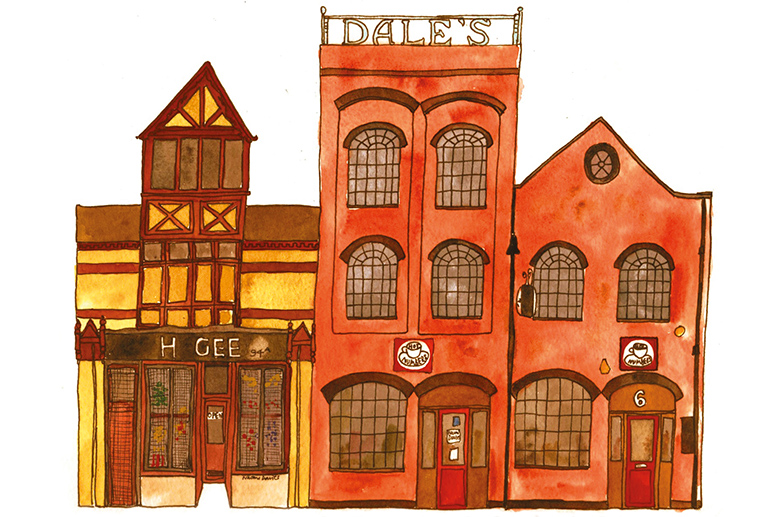
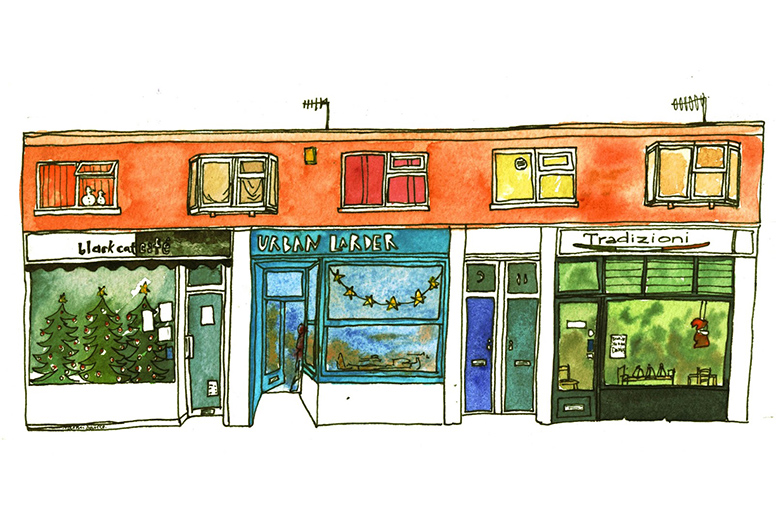
Original pen and watercolour by Naomi Davies, available for purchase at her website (www.naomidaviesart.co.uk)
“I’m born and bred in Cambridge, so I’m one of those rare birds,” says Becky. “And, for me, it’s really important that we remember that Cambridge town has a really interesting history as well, it’s not just all about the colleges. One of our committee members, Allan Brigham, does the Town not Gown tours, and I think it’s true of lots of the committee members that they’re really keen to show that there’s more to Cambridge than the colleges – there’s a wonderful rich history.
“It’s just all there,” says Becky, and she’s not wrong – the range of buildings Mill Road has seen over the years is staggering. Off the top of her head, she lists a workhouse, the Labour club, the Conservative club, the first library in town, Anglican churches, Methodist churches, Baptist churches and a mosque. Then there’s the cement works, the railway and the railway workers, heavy industry in the iron foundry that was on the site of the city council depot; a hospital, a cemetery and a maternity hospital. As resident Wendy Maskell comments, “It was said that one could be born and die in Romsey Town and have everything one needed in between without ever leaving Mill Road.”
“I personally find the history of the workhouse absolutely fascinating,” says Becky, when asked which building she finds the most interesting. “The fact that it’s the oldest-surviving building on Mill Road. It’s had this really interesting life, going from being the union workhouse to the county infirmary, it was then the maternity hospital. Ever since 1838 that site has been caring for people, and I think that really appeals to me.”
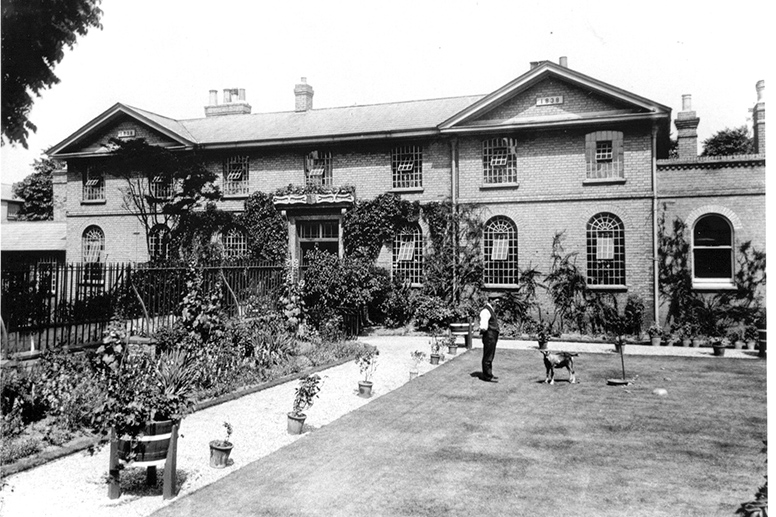
Cambridge Union Workhouse and Maternity Hospital ©Cambridgeshire Collection
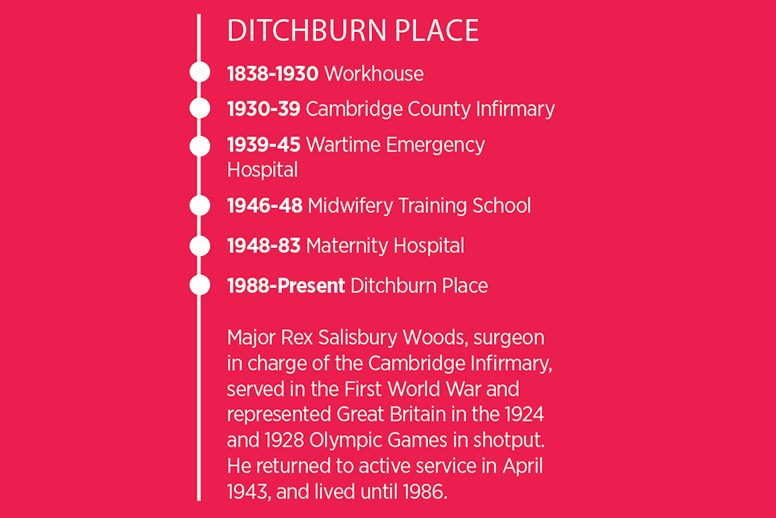
The community vote, however, goes to the Kinema, at the site of which (number 83 Mill Road) you’ll now find student housing and fast-food restaurants. ‘The Kinny’ began operating as a cinema from 11 December 1916, under the ownership of Alfred James Pointer. It was renowned as the home of the serial and Wild West films, and also affectionately known as ‘the fleapit’. It was also a favourite hang out of philosopher Ludwig Wittgenstein in 1930s whilst he was a fellow of Trinity College.
“Mill Road hasn’t stopped, and neither has its history or its buildings”
“Above the Kinema, on top of Dales Brewery, was a large cup,” recalls Cambridge resident Fred Unwin. “When the sun shone it splayed out rays, and as a small boy I wasn’t going to an old, rough building, it was like our beacon to the Kinema, it was like a Mecca that all the poor kids were going to. I knew when I got inside I was going to see something I’d never see again.”
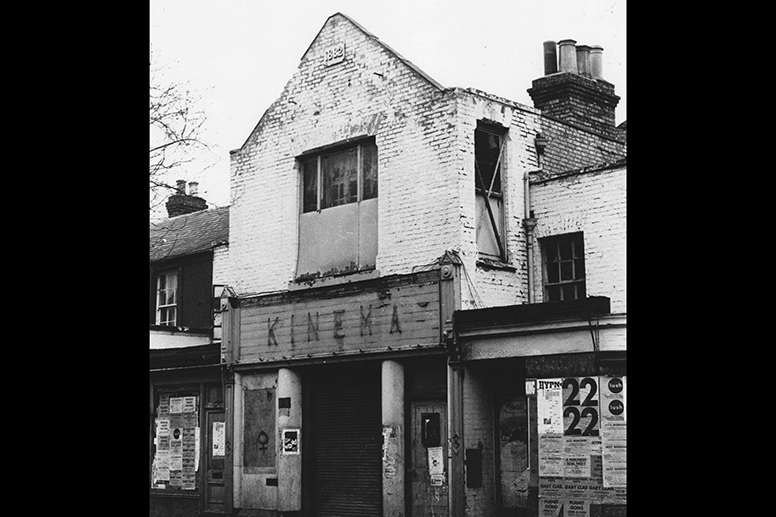
The Kinema. ©Mill Road History Society
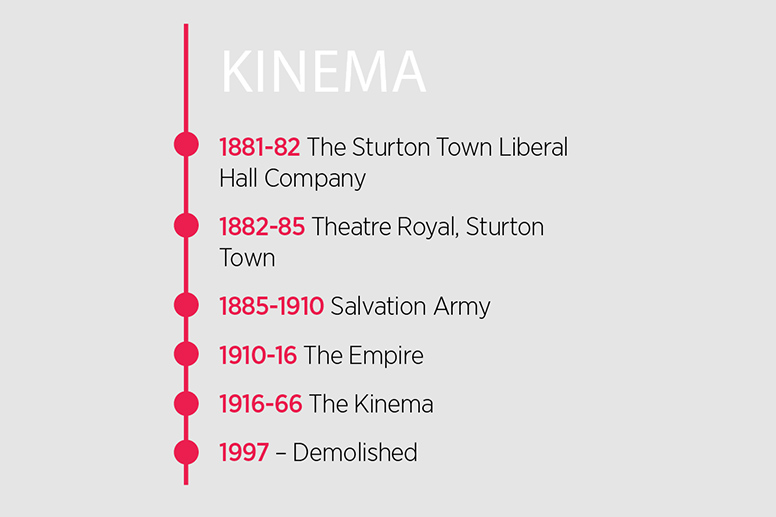
Since its inception, there have been a series of local events to bring the project’s work to the people of Cambridge, including showcasing their findings at the Mill Road Winter Fair last month. In Becky’s words, “if you’re going to do all this research and get people involved the most important thing is sharing it and letting people know. And not everyone uses websites, that’s why events are really great: older people can turn up, children can do activities and I think it’s that opportunity, sometimes people just want to meet you and tell you their memories.”
At the end of its term, the Mill Road History Project will become the Mill Road History Society, and the group hopes that their work will continue long beyond its original goals. Theoretically, the volunteers behind the project might step away from Mill Road’s buildings, its Olympic athletes and missionary doctors, its shopkeepers and students, its journalists, priests and politicians. But Mill Road hasn’t stopped, and neither has its history or its buildings. It continues to shine a beacon of community spirit in Cambridge and to thrive and evolve. What this project has done, so beautifully, is show us this place, and perhaps even ourselves as Cambridge residents, from a new angle.

